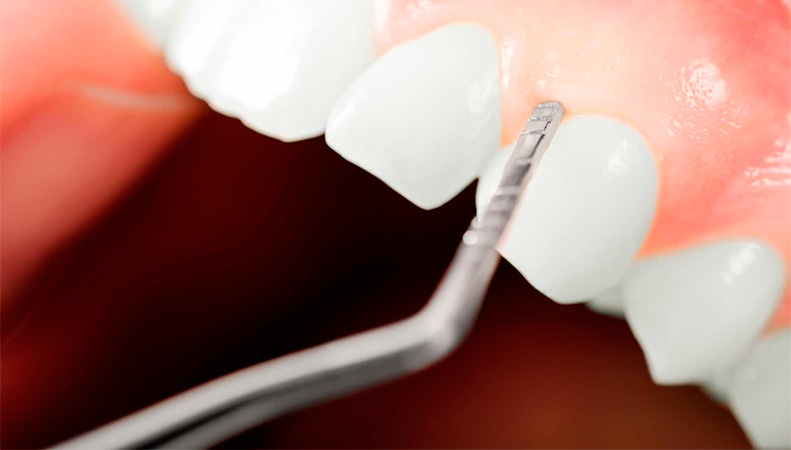The periodontal treatment consists of…
- Hygienic phase: In this first phase of the periodontal treatment, the spaces between tooth and gum will be cleaned with a Scraping, Smoothing and Polishing of the root surfaces (RAP). This phase is known by patients as “Curettages”, since it uses instruments called curettes.
- Surgical phase: In this second phase, which is not always necessary, deep periodontal pockets will be treated when dealing with periodontitis in which severe bone destruction has already occurred.
- Phase of maintenance: They are maintenance treatments that allow to control the disease in the long term. The frequency of these treatments is evaluated individually for each patient, but we usually do it every 4 or 6 months.
Importance of reviews and maintenance
Once the patients understand the origin of these oral affectations, they begin to become aware of the importance of the controls after the first phase of the treatment.
What can happen if we do not treat the gums?
The consequences of not treating the gingivitis and periodontitis can group in local or general:
- At local level we can suffer: loss of teeth in our oral cavity, which implies a direct effect on the aesthetic and masticatory function that translates into insecurity and patient dissatisfaction at the social level and bad digestion due to masticatory insufficiency.
In addition to this, patients who suffer from these untreated diseases often suffer from bad breath, gingival retraction (with the consequent visual exposure of the dental roots), mobility of the teeth, as well as bleeding and discomfort in the gums. At a systemic level, the presence and persistence of bacteria in the gums can cause these bacteria to enter the blood system of our body and can nest in other places of our body reando infectious foci with great repercussion as they are at the cardiovascular level, risk of premature birth, decompensate diabetes, etc.
Do you suspect that your gums are not right?
If you bleed spontaneously or with brushing, if you have a bad taste or bad mouth odor is that your gums are not good.
If in addition there is redness and recession of gum, sensitivity, note that the teeth have changed position and even move, are symptoms for you to come and visit us.
At Clínica Lázaro, we will assess your periodontal health and plan the most appropriate treatment.
Contact us to make a first visit and be able to assess your case.
Are gum diseases contagious?
Gum diseases are caused by pathogenic bacteria.
Although for now it is not possible to demonstrate that periodontal disease is contagious, bacteria seem to be transmissible between humans, but despite the frequency of contact through saliva (kisses, use same spoons, glasses, etc.) the number of microorganisms transmitted is low.
At Lázaro clinic, we believe that in order for pathogenic microorganisms to grow and outnumber the non-pathogenic bacteria of the habitual resident microflora of our oral cavity, an important environmental change must take place to favor this event, such as situations of poor oral hygiene conditions. , increased smoking or eating disorders that can occur in some cases.
There is evidence of transmission between relatives of pathogens or periodontal bacteria. There are 2 types:
- Vertical transmission: from parents to children.
- Horizontal transmission: from husband to wife and/or vice versa.
It is remarkable to note that for this transmission to occur, there must be frequency of contacts through saliva (especially kisses) this occurs with stable couples (not sporadic) and family.
At Lázaro clinic, we carry out a diagnostic protocol in which, through microbiological analysis tests, we assess whether there has been horizontal and/or vertical transmission between family members.
We also do genetic tests (interleukin gene) to assess the genetic predisposition to suffer from gum diseases within the family environment.


